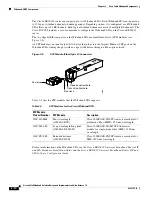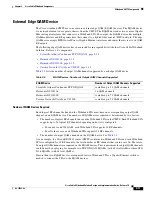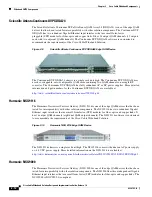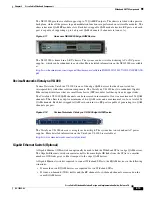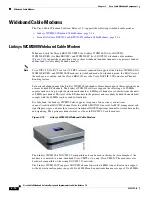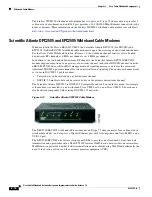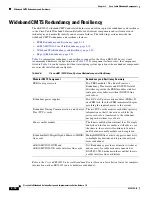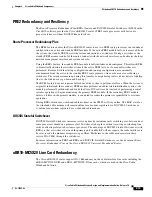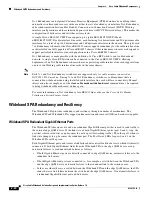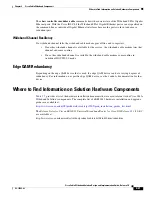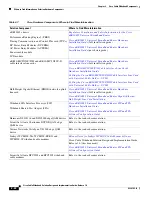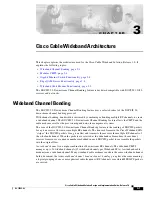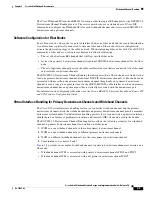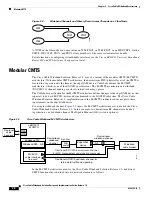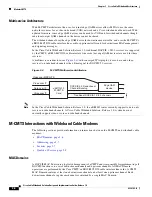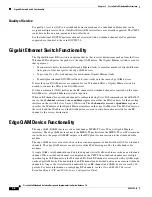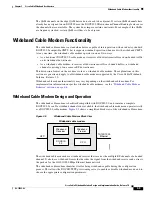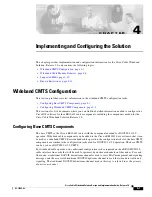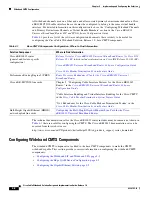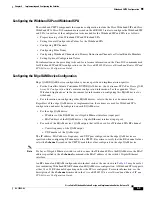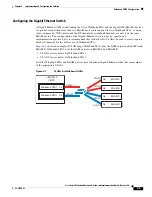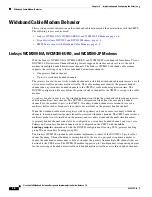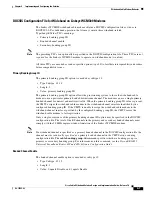
3-2
Cisco Cable Wideband Solution Design and Implementation Guide, Release 1.0
OL-10705-02
Chapter 3 Cisco Cable Wideband Architecture
Wideband Channel Bonding
The DOCSIS 3.0 Downstream Channel Bonding feature is overlaid on top of and is transparent to a
DOCSIS 2.0 system. In the Cisco Cable Wideband Solution, Release 1.0, these channels are used for
wideband operations:
•
For the wideband downstream channel, the Wideband SPA uses its Gigabit Ethernet port to send data
traffic to the EQAM device. This EQAM device uses one or more QAM output channels, depending
on how the wideband channel is configured, to send striped packets to the wideband cable modem.
In Release 1.0, channel bonding is used for downstream wideband channels only.
–
With the Linksys WCM300-NA modem, a downstream wideband channel can combine up to
eight RF channels for a total bandwidth of up to approximately 292 Mbps (at 6 MHz and 256
QAM).
–
With the Scientific Atlanta DPC2505 modem, a downstream wideband channel can combine up
to two RF channels for a total bandwidth of up to approximately 74 Mbps (at 6 MHz and 256
QAM).
•
A traditional DOCSIS 2.0 downstream channel is associated with the wideband channel and carries
MAC management and signaling messages. The traditional DOCSIS 2.0 downstream channel does
not carry any bonded traffic. The traditional DOCSIS downstream channel used in this way is called
the
primary downstream channel
.
•
A traditional DOCSIS 2.0 upstream channel associated with the primary downstream channel
carries return traffic and signaling.
The wideband channel, a primary downstream channel, and an associated upstream channel are
configured for each fiber node that provides the wideband channel.
Figure 3-1
shows a wideband channel consisting of four bonded RF channels on the EQAM device.
These RF channels are asynchronous and carry only bonded traffic. As shown in
Figure 3-1
, a traditional
DOCSIS 2.0 downstream channel associated with the wideband channel carries MAC layer signaling for
the wideband channel. The upstream channel associated with the wideband channel is a traditional
DOCSIS 2.0 upstream.
Figure 3-1
Channel Bonding to Create a Wideband Channel

